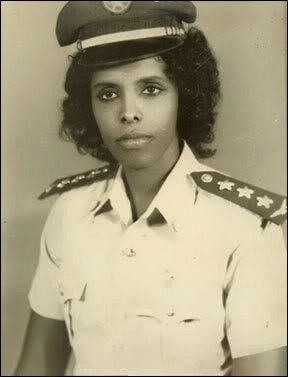There’s a small thing though. Siad Barre was quite silent about cultural practices that harmed women. Infibulation continued undeterred under his regime. That was probably the underside to his efforts at empowering women.
Interestingly, Siad Barre had come to power through a bloodless coup that rode on a wave of Propaganda aimed at Ibrahim Egal’s government, some of them being incompetence, corruption, and attempts at expanding Somali Territory while abandoning development at home. Nearly all of these accusations were true. That was in 1969.
These attempt at expanding territory were three fold. There was the initial Ogaden War that was aimed at bringing back the Ogaden part of Ethiopia back to Somalia. That was in 1964. Also at that time, the Somali Government set up the High Command of the Northern Frontier District Liberation Movement. This was the Somalia side of what came to be referred to as the Shifta War. This Liberation Front armed and funded Kenyan Somalis to wage a secession war. The war was crushed brutally by the Kenyatta Government. The third part involved Djibouti.
During the Shifta War, Radio Somalia (what later came to be known as Radio Mogadishu) aired propaganda aimed at Kenyan Somalis. At that time, Kenya did not have a Foreign Affairs Ministry. The Minister for Security and Internal Security was Dr. Njoroge Mungai, Kenyatta’s personal physician. Njoroge Mungai put up a diplomatic offensive that would later bear fruits and end the War. Somalia had friends in Egypt, The USSR, and other gulf states, most of which were on friendly terms with Kenya.
The Secessionist Fighters in what would later be known as the North Eastern Province set up landmines, many of which were retrieved by the Kenyan Army and preserved for use as evidence. One of the key suppliers of these were Egypt. Njoroge Mungai argued Kenya’s case at the Organization of African Unity (OAU) and convinced Egypt and other African Countries to stop backing Somalia in its aggressions.
In Ogaden, Egal’s government formed the Western Somalia Liberation Front. But this was before 1969 when Barre came to the top seat of the Five Pointed Star.
Interestingly, Barre started a war with Ethiopia again over the Ogaden in 1977. It would turn out to be a mistake.
On the Kenyan side however, there were fears that he would restart the Shifta War. There was evidence that he in fact tried. Often, there would be “hunters” with military grade weapons that often outgunned the Kenya Wildlife Rangers. In 1978, there was a diplomatic spat between the two neighbors. Kenya accused the Somali Embassy of giving passports to Kenyan Somalis with military/combat backgrounds. The Somali ambassador did not deny this. The statement given was that the passports were for helping Kenyan Somalis get education outside the country since it was difficult for them to get them through Kenyan channels.
The USSR’s decision to side with Ethiopia on the Second Ogaden War would later mean that Somalia lacked the capacity to get involved on two fronts. The Second Shifta War then died a premature death, a relief for Kenya.
The opinions expressed in this article are the author’s own and do not reflect the view of Alleastafrica media.



